Ofcom Redefine Ultrafast Broadband as 300Mbps, But Only 2% Coverage
The UK telecoms regulator has today published its Connected Nations 2015 report and confirmed that 83% of premises are now within reach of a fixed line superfast broadband (30Mbps+) service (up from 75% in 2014), with take-up reaching 27% (up from 22%). But they also changed the definition of “ultrafast” speeds from 100Mbps+ to 300Mbps+.
The eagle eyed among you will notice that today’s report is effectively a replacement for Ofcom’s prior Infrastructure study and contains much of the same information, which means that it offers a useful update on the progress of national broadband and mobile infrastructure (note: most of the data for 2015 was collected during May and June).
Advertisement
On the fixed line side we note the clear improvement in superfast broadband coverage and uptake, which is now predominantly being driven by the Government’s Broadband Delivery UK programme with BT (aims to reach 95% of the UK by 2017/18) and Virgin Media are also busy expanding their coverage in urban areas (reaching 60-65% of the UK by 2020).
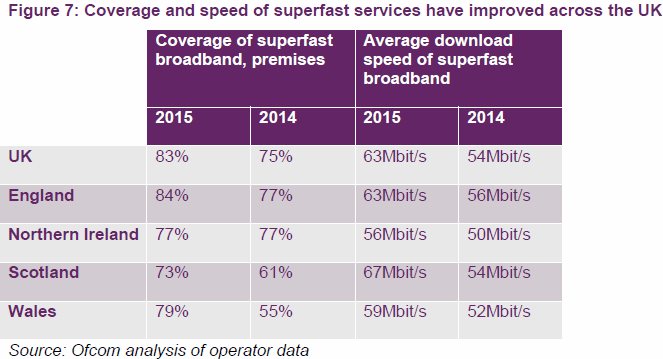
However it’s worth pointing out that the raw footprint of related Next Generation Access (NGA) networks, which includes those that offer sub-30Mbps speeds to some premises, doesn’t seem to be mentioned in the new report. But if it were included then the UK wide coverage figure is likely to be around the 90% mark.
We also note that the average broadband download “sync” speed for the UK as a whole is now 28Mbps (up by 22% from 23Mbps in 2014), although this is generally a more optimistic performance expectation than real-world speedtests and should thus be taken with a pinch of salt.
Otherwise it’s interesting to note that the UK coverage of superfast services in rural areas has increased significantly, from 22% in 2014 to 37% (over 1.1 million premises). As usual some parts of the United Kingdom have seen more progress over the past year than others, particularly in Wales and Scotland where there’s a lot of sparse countryside to tackle.
Advertisement
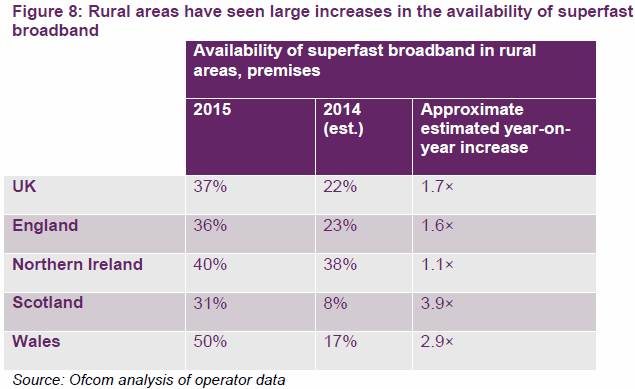
However 48% of rural premises (around 1.5 million properties) are connected by lines that are unable to receive speeds higher than 10Mbps (4% in urban areas), while 22% can’t get higher than 5Mbps (2% in urban areas) and this falls to 9% for speeds of less than 2Mbps (1% in urban areas), which is something that the Government will need to consider in their plans for a new 10Mbps Universal Service Obligation (here).
The report also examines the coverage of mobile networks, such as via the usual 2G, 3G and 4G based platforms that almost everybody should now be quite familiar with. Overall 73% of UK premises can now receive a 4G signal from three of the four networks (up from 44% last year), and this will continue to improve over the next two years until the roll-out hits around 98%.
However only 46% have 4G coverage from all four major operators; EE dominate 4G coverage due to having nearly a year’s head-start, but take them out of the equation and that’s the result.
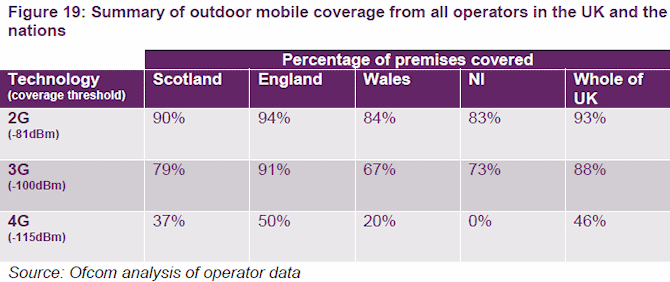
Elsewhere one of the more curious changes in the latest report stems from Ofcom’s decision to define “ultrafast broadband” as offering a minimum Internet download speed of 300Mbps, which is likely to irritate Virgin Media and others that have generally preferred to think of “ultrafast” as starting at 100Mbps. The latter does however make it easier to use Virgin’s existing 200Mbps cable network to boost the UK’s national figures (it covers around 45% of premises), with altnet ISPs and Openreach filling the rest via FTTP/H solutions.
Advertisement
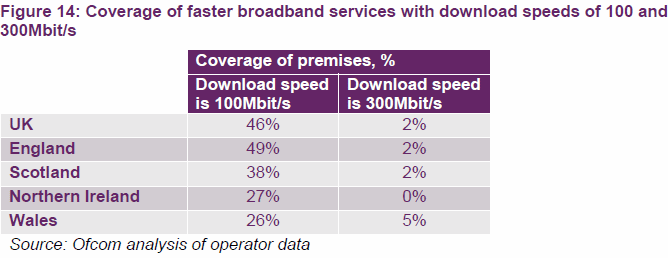
Even the EU and UK Government (here) use 100Mbps as the starting point for ultrafast, but definitions are often more political than technical and it’s hard not to see this as pandering somewhat to BT’s current 330Mbps FTTP and forthcoming G.fast technology, which is also promising 300Mbps+ speeds over the next decade of its roll-out.
Virgin was originally expected to launch a 300Mbps product for home users this year, but something changed and today’s news may now lend weight to an expectation that it could still surface next year (although Virgin are having difficulty delivering on 200Mbps) when they officially launch their new SuperHub v3 router (details).
Ofcom Statement on Ultrafast Speeds
“There is not yet a consensus on a definition for these ultrafast services, with views on the minimum download speed ranging from 100Mbit/s to 1Gbit/s. Figure 14 shows the current coverage of broadband services in UK with download speeds of 100Mbit/s and 300Mbit/s.“
The report also contains plenty of other interesting data, such as the fact that the average monthly data usage per residential fixed line broadband connection has risen from 58GB (GigaBytes) last year to 82GB now.
Similarly it’s estimated that, as of August 2015, 46% of premises in SME-only (small business) postcodes had broadband connections with a maximum speed of less than 10Mbps, while 24% had maximum speeds of less than 5Mbps and 12% had maximum speeds of less than 2Mbps. Overall Ofcom found that 18% of SMEs are still unlikely to have access to superfast broadband beyond 2017.
Ultimately there’s far too much data for us to easily summarise, but here’s a useful overview of the main statistics and you can read the full report online. Separately Ofcom has also launched a new Wi-Fi Checker app for Smartphones and tablets, which allows consumers and businesses to discover the quality of their wireless internet signal and offers practical steps to help people improve connectivity.
Ofcom research found that slow Internet speeds can often be caused by poor WiFi set-up or slow hardware, which can hamper speeds. We’d recommend reading our related article on this subject for a bit more background: 10 Top Tips for Boosting Your Home Wi-Fi Wireless Network Speeds.
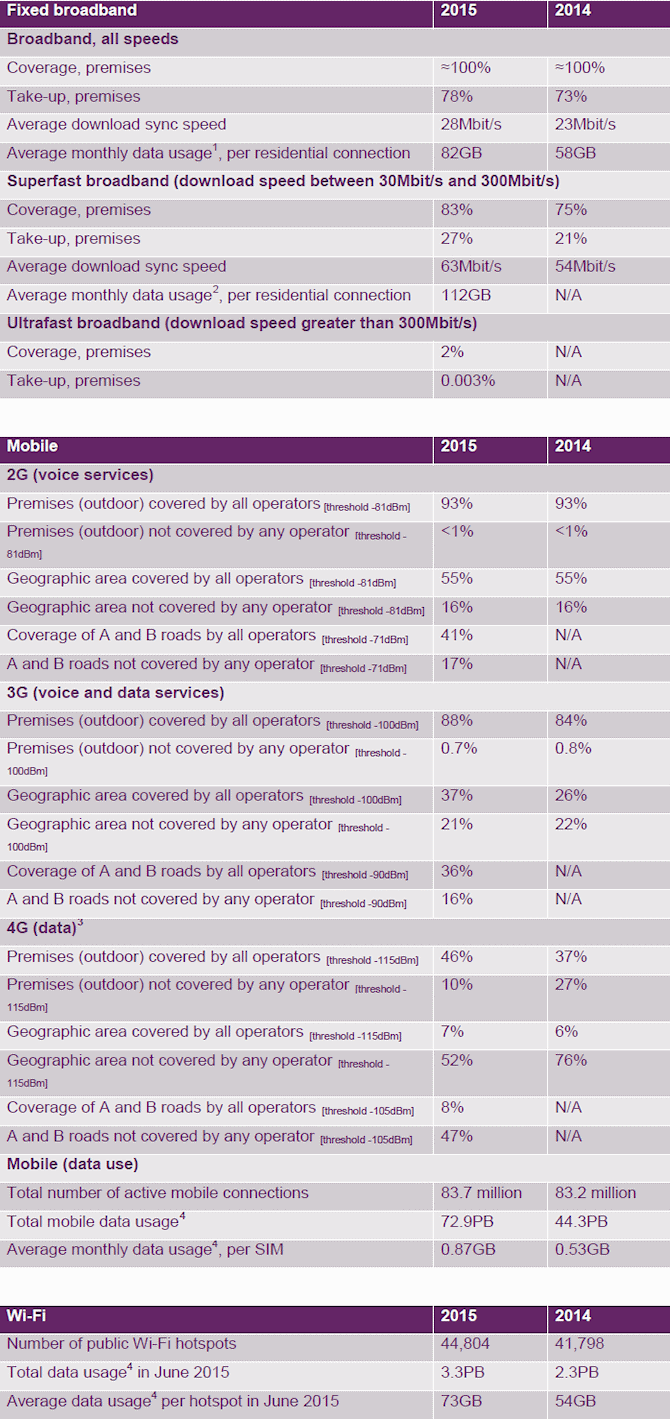
Mark is a professional technology writer, IT consultant and computer engineer from Dorset (England), he also founded ISPreview in 1999 and enjoys analysing the latest telecoms and broadband developments. Find me on X (Twitter), Mastodon, Facebook, BlueSky, Threads.net and Linkedin.
« KCOM Group Moots Sale of UK Network Assets Outside of East Yorkshire


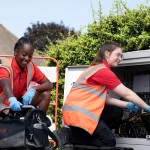

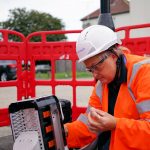
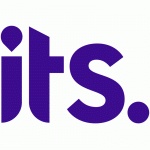



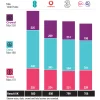








































Comments are closed